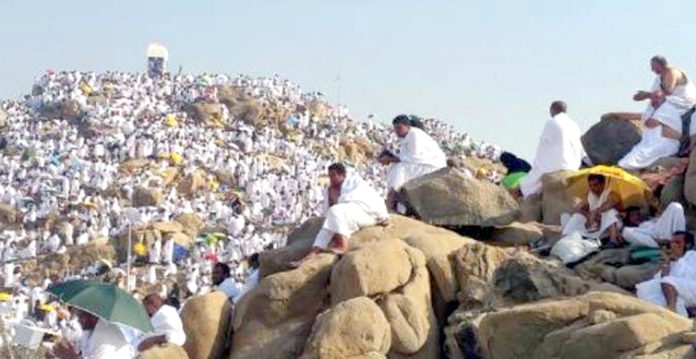As the annual Hajj pilgrimage approaches, beginning on June 4, Saudi Arabia has launched a comprehensive safety strategy to protect millions of pilgrims expected to arrive under extreme summer conditions. With temperatures projected to soar to 40–45°C, the Kingdom is prioritizing health, safety, and well-being by implementing cutting-edge technological and infrastructural solutions.
Saudi Minister of Hajj and Umrah, Tawfiq Al-Rabiah, acknowledged that rising temperatures are among the major challenges authorities face each year. “This is an issue to which we give top priority,” he said, highlighting the proactive steps being taken.
The Saudi Ministry of Health confirmed five cases of heat exhaustion at the holy sites on Friday, but assured the public that all affected individuals received immediate medical care and are now in stable condition. Health teams remain on high alert to respond swiftly to further incidents.
Also Read: Saudi Minister Reviews Hajj Sites, Launches $9M Upgrades Ahead of Pilgrimage
To mitigate heat-related risks, pilgrims are being urged to stay hydrated, avoid direct sunlight, and follow health advisories such as using shaded walkways, wearing protective clothing, and seeking help at the first signs of fatigue. Multilingual awareness campaigns are in place to ensure pilgrims from around the world understand and follow safety guidelines.
Significant infrastructure upgrades are underway to improve comfort and safety. Over 50,000 square meters of shaded areas have been added, alongside more than 400 misting and cooling stations. Renovations around the Grand Mosque continue, and major walkways have been treated with heat-reflective asphalt to reduce surface temperatures.
In a major healthcare advancement, the Ministry of Health has launched a robotic surgery program at King Abdullah Medical City in Makkah, providing state-of-the-art medical intervention for pilgrims in need.
The Saudi Food and Drug Authority (SFDA) has also reviewed and ramped up its operational readiness for Hajj. CEO Dr. Hisham S. Al-Jadhey visited several key sites in Makkah, including the SFDA’s Hajj Operations Center and the regulatory zone within the Holy Sites. He emphasized the role of technology, including AI, smart analytical tools, and body cameras, in ensuring food and medicine safety through real-time monitoring and inspections.
Al-Jadhey also met with Dr. Abdullah bin Rashoud Al-Algwizani, CEO of the Saudi Public Health Authority (Weqaya), at the Mina emergency hospital to reinforce inter-agency coordination in managing health services during Hajj. They later toured the National Health Emergency and Crisis Management Center to assess national preparedness.
To further support crowd management and emergency response, Saudi authorities are deploying drones and AI-powered monitoring systems that track pilgrim movements in real time. These tools allow command centers to detect overcrowding, respond swiftly to medical incidents, and maintain order.
Efforts to prevent unauthorized pilgrims from entering the holy sites have also intensified. AI surveillance systems are actively identifying individuals without permits, addressing a key issue from last year when most heat-related deaths involved unregistered pilgrims.
Through a combination of advanced technologies, medical innovation, infrastructure upgrades, and regulatory oversight, Saudi Arabia is reaffirming its commitment to offering a safe, comfortable, and spiritually fulfilling Hajj experience for all attendees.
(This story is sourced from a third-party syndicated feed. Raavi Media takes no responsibility or liability of any nature. Raavi Media management/ythisnews.com can alter or delete the content without notice for any reason.)


